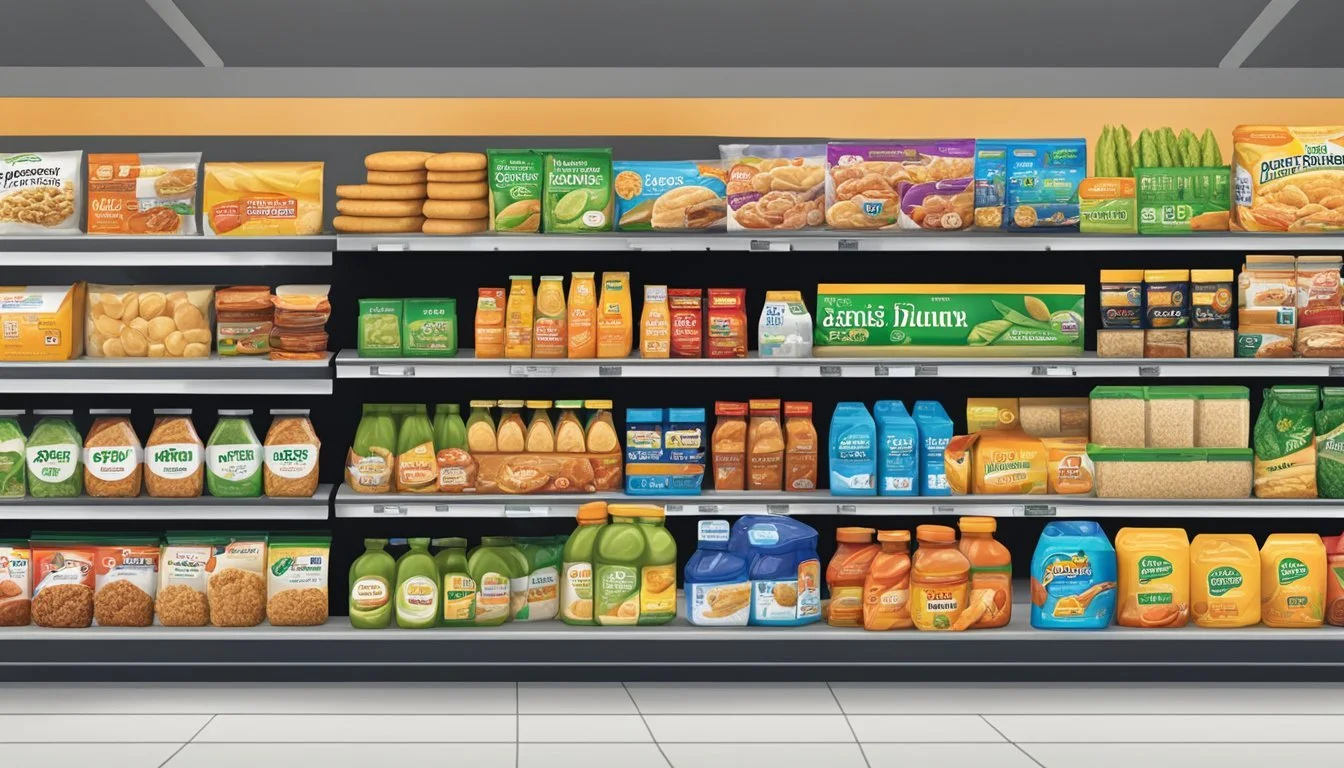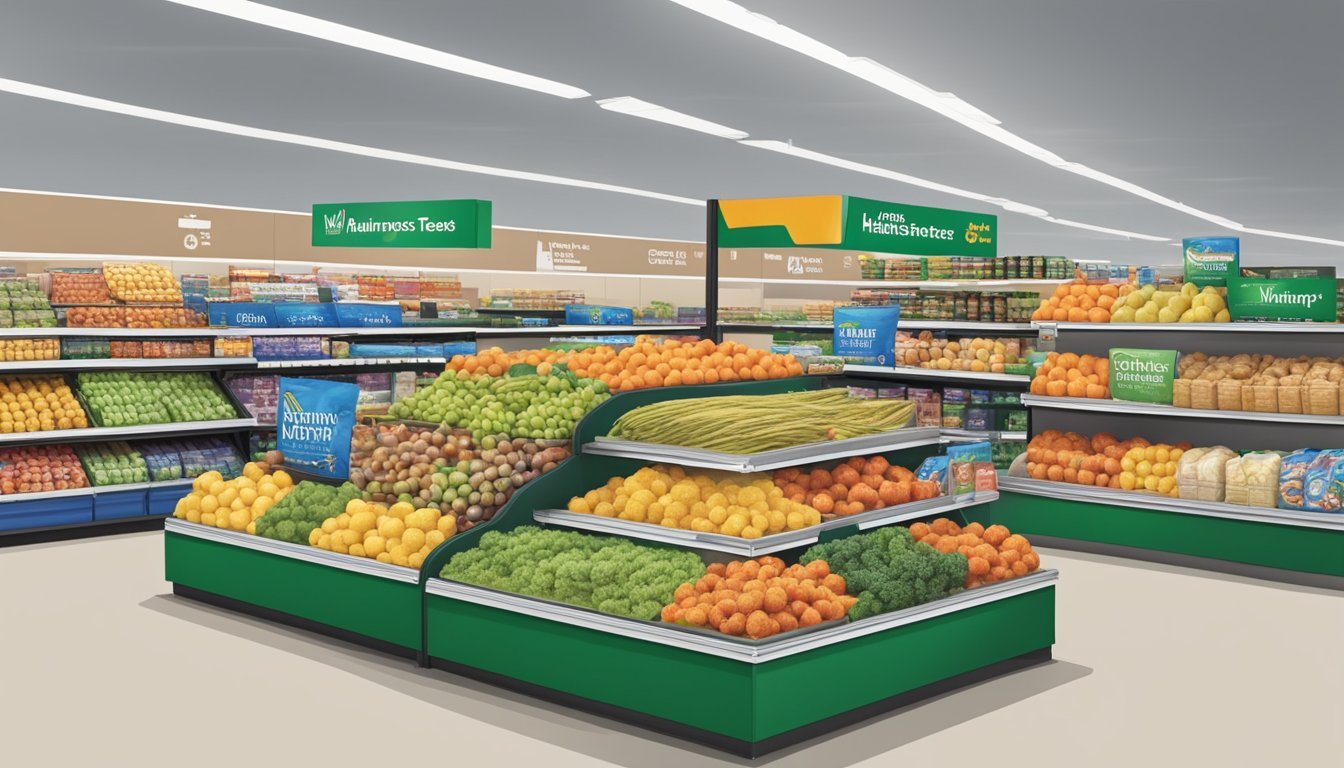Is Walmart Cheaper Than Harris Teeter?
Comparing Grocery Prices and Deals
Part of Our Grocery Store Guide with Details on Walmart Prices and Harris Teeter Prices
In the realm of grocery shopping, cost is a critical factor for many consumers. When it comes to comparing prices between Walmart and Harris Teeter, a pattern emerges: Walmart consistently offers lower prices on a broad range of items. A closer examination reveals that even with sales and discounts at Harris Teeter, Walmart’s everyday prices tend to be more wallet-friendly. Shoppers looking to stretch their dollars may find Walmart to be a more economical choice.
Harris Teeter, while often perceived as a purveyor of quality groceries, typically commands higher prices than Walmart. This is evident in direct price comparisons where Walmart's sum total at the register is frequently lower. The pricing strategy at Walmart is aggressive, aiming to provide a cost-effective shopping experience, often making it the go-to option for budget-conscious individuals.
It's important to note, however, that while price may be a deciding factor, shoppers also consider other aspects such as customer service, store atmosphere, and convenience. Each supermarket chain offers its own unique shopping experience that may justify the difference in pricing for some customers, depending on their priorities and preferences.
Walmart and Harris Teeter Overview
Walmart, a leading supermarket chain, established its first store in 1962 in Arkansas by Sam Walton. Today, it operates a vast network of stores globally, offering a wide range of products including groceries. Walmart is known for its competitive pricing, broad assortment, and large-scale operations.
Harris Teeter is a regional supermarket chain that began in North Carolina in 1960 by W. Harris and Willis Teeter. Harris Teeter is now a subsidiary of The Kroger Co., having been acquired to expand their market presence. The brand maintains a strong foothold in the southeast and mid-Atlantic regions of the United States.
Both chains are active competitors in the grocery industry, yet they operate with different business models and target markets. Walmart's focus on affordability and scale often positions it as a go-to venue for budget-conscious consumers. Harris Teeter, on the other hand, emphasizes quality and customer service, catering to a more premium segment of the market.
The grocery sector is a highly competitive landscape with various key players including Aldi, Amazon, Publix, Whole Foods, and Target, all vying for consumer loyalty through a combination of pricing strategies, convenience, product offerings, and shopping experience.
Ownership:
Walmart: Publicly traded and independent
Harris Teeter: Owned by The Kroger Co.
Market Segmentation:
Walmart: Broad appeal, focusing on price and variety
Harris Teeter: Targets higher-end consumers, with an emphasis on service and quality
In terms of store count and geographic reach, Walmart far exceeds Harris Teeter, but they both retain strong brand recognition in their respective niches.
Price Comparison Fundamentals
When comparing prices between Walmart and Harris Teeter, it is critical to interpret price tags accurately and to consider various market factors that influence grocery prices.
Understanding the Price Tags
Price tags are the first point of information for consumers comparing Walmart and Harris Teeter. Walmart's everyday prices tend to be lower. For instance, a basket of groceries costing $88.60 at Walmart might be $15.32 more at Harris Teeter. Sales at Harris Teeter, though frequent, do not consistently bridge this gap.
Item prices
Walmart: $88.60 (total for goods comparison)
Harris Teeter: $103.92 (total for same goods)
Factors Affecting Grocery Prices
Several factors contribute to the pricing dynamics at retail stores like Walmart and Harris Teeter. These include:
Volume of Sales: Higher sales volume can lead to lower prices due to bulk purchasing and economies of scale.
Operational Costs: Stores with lower overhead can maintain lower prices.
Brand Positioning: Retailers may position themselves as value-based (Walmart) or premium (Harris Teeter), affecting their pricing strategy.
Discounts and Sales: Temporary price reductions can provide savings but are not always reflective of standard pricing. Walmart's strategy focuses on consistent low prices, while Harris Teeter may use sales to attract customers.
Shoppers' potential savings at Walmart as compared to Harris Teeter typically stem from Walmart's commitment to everyday low pricing, which contrasts with Harris Teeter's frequent sale-driven discounts.
Product Selection and Availability
When comparing Walmart and Harris Teeter, the scope of product selection and availability plays a crucial role in determining where shoppers may have a more satisfying experience. Both retailers offer a diverse array of products, catering to different customer needs in terms of produce, meat, dairy, and organic options.
Produce and Organic Options
At Walmart, customers find a considerable variety of fruits and vegetables, including both conventional and organic produce. Walmart's significant buying power allows it to maintain a consistent supply of these products. Harris Teeter, on the other hand, emphasizes quality and variety in its produce department, often sourcing from local farms when available. They provide shoppers with a broad selection of organic produce, which caters to a market focused on healthier food options.
Meat and Dairy Variety
The meat and dairy sections in both stores are well-stocked, with Walmart offering competitively priced meat and dairy products, including staples like eggs, milk, and butter. Walmart tends to prioritize affordability and covers the basics such as cheddar cheese and sour cream. Harris Teeter, while also providing these essentials, is known for its wider assortment of specialty meats and an expansive range of high-quality dairy products, including a variety of cream cheeses.
Brands and Store Labels
Walmart and Harris Teeter both feature a mix of national brands and their own store labels. Walmart's private label, known for its affordability, covers a wide spectrum from pantry staples to frozen foods. Harris Teeter's store brand products tend to focus on premium quality, offering shoppers an alternative that competes with national brands on both quality and price, while also encouraging loyalty to the store's offerings.
Store Services Comparison
Walmart and Harris Teeter offer a range of services aimed at enhancing the shopping experience for their customers. These services include delivery options, in-store features, and online shopping capabilities.
Delivery Services
Walmart leverages its extensive network to offer efficient delivery services. Customers can opt for same-day delivery through Walmart's partnership with providers like DoorDash. Harris Teeter provides the delivery service via its ExpressLane subscription, offering customers the convenience of home delivery for their groceries.
In-Store Experiences
Harris Teeter stores often feature a welcoming atmosphere with specific amenities such as sushi bars and Starbucks kiosks. The retailer focuses on a more personalized in-store experience. On the other hand, Walmart prioritizes low prices and a vast selection of goods. It offers a broader range of products beyond groceries, including electronics, clothing, and home goods, making it a one-stop shop for many customers.
Online Shopping Options
Both retailers offer online shopping options. Walmart has a significant online presence and provides a variety of pick-up and delivery slots, allowing customers to shop online at their convenience. Harris Teeter's website also enables customers to order groceries online for pickup or delivery, featuring a user-friendly interface to streamline the shopping process.
Geographic Coverage and Market Presence
Walmart and Harris Teeter are two significant players in the grocery market, differing in their geographic spread and influence across regions, with notable presence along the East Coast and in areas like the Charlotte region.
Regional Availability
Walmart has a considerable national presence, with stores accessible across the United States. Their network deeply penetrates the East Coast, exhibiting a dominant standing in various locations including states like South Carolina. Walmart’s commitment to being within reach of most Americans renders it a ubiquitous option for consumers in both urban and rural areas.
Harris Teeter, on the other hand, has a strong regional focus on the East Coast, particularly known for its significant saturation in the Charlotte region, which serves as an influential market in grocery competition. Historically rooted in North Chester, South Carolina, Harris Teeter maintains a robust presence within this locale, tailoring its service and products to the regional consumer base.
Growth and Expansion
The growth trajectory of Walmart and Harris Teeter, as informed by data from the Chain Store Guide, depicts contrasting paths. Walmart has seen incremental growth in market share over the years, leveraging its broad assortment and low pricing strategy to appeal to a wider demographic. Although there was a slight decrease in market share recently, Walmart sustains a compelling lead in the general market.
In contrast, Harris Teeter, while known for its commitment to quality and customer service, has experienced a marginal decline in market share. Within the competitive landscape of the Charlotte region, it continues to be a key player, but the figures illustrate a challenge in maintaining and expanding its market presence amidst aggressive grocery competition.
Consumer Experiences and Quality
When comparing Walmart and Harris Teeter, consumers report varying levels of satisfaction and opinions on the quality of fresh products. The information presented draws from customer satisfaction scores and the perceived quality of items, particularly focusing on fresh foods like produce and meats.
Customer Satisfaction Scores
Harris Teeter has received positive feedback for its customer service and store cleanliness. Consumer ratings reflect a level of satisfaction that factors in more than just pricing. On score aggregating platforms, results indicate:
Harris Teeter: Consumer ratings average around a 4.2 score.
Walmart: Shows a higher overall score, with an average of 4.6.
These scores summarize consumer interactions, service, and overall shopping experience at each respective grocery chain.
Quality of Freshness
With regard to freshness, the quality of perishable goods such as fruits, vegetables, and meats is a significant consideration for consumers.
Fresh Produce Quality:
Walmart: Known for competitive prices but with varying reports on the freshness of produce.
Harris Teeter: Typically regarded for having high-quality produce, although prices may be higher.
Meat Quality:
Walmart: Offers a wide selection, but quality is sometimes reported to be inconsistent.
Harris Teeter: Often recognized for providing premium meat options, which may justify the higher price points.
Overall, while Walmart provides affordability, Harris Teeter is often associated with better fresh product quality, which is a key component of consumer satisfaction.
Shopping and Savings Strategies
When it comes to grocery shopping, consumers are often faced with the task of balancing quality and cost. Comparing stores like Walmart and Harris Teeter, understanding how to maximize savings through strategic shopping is crucial for budget-conscious shoppers.
How to Maximize Savings
Meal Planning: Shoppers can save significantly by developing a weekly meal plan. This allows them to purchase only what is necessary and avoid impulse buys. Creating a Grocery List: Based on the meal plan, a detailed grocery list helps shoppers stay focused and purchase only what's needed, which can lead to considerable savings.
Walmart often provides lower everyday prices.
Harris Teeter offers sale items that could be cheaper at times.
Using a meal plan and a grocery list together can result in a more efficient shopping experience, potentially making Walmart the winner for everyday savings.
Strategic Shopping Tips
Compare Prices: Customers should actively compare prices on staple items. For instance, based on snippets above:
Item Walmart Harris Teeter Milk Lower Higher Eggs Lower Higher Bread Lower Similar
Utilize Coupons and Rewards: Shoppers can take advantage of Harris Teeter's coupons and rewards programs, which may offer savings that can compete with Walmart's lower prices.
Being strategic in utilizing price comparisons and retailer-specific savings opportunities allows customers to make informed decisions that can result in the best overall value for their grocery shopping.
Impact of External Factors
When considering the price competitiveness between Walmart and Harris Teeter, external factors play a significant role. They can indirectly influence retail prices and consumer purchasing power.
Economic Fluctuations
Economic variations, such as inflation and changes in the supply chain, directly impact retail pricing strategies. Walmart's large scale often allows it to absorb these fluctuations more efficiently than smaller chains like Harris Teeter, enabling Walmart to maintain lower prices. Harris Teeter, while benefiting from economies of scale within its supply framework, may have less flexibility in adjusting to immediate economic changes.
Effects of the COVID-19 Pandemic
The coronavirus pandemic has had an extensive impact on the retail market, affecting both consumer behavior and operational costs. Walmart and Harris Teeter had to adapt quickly to changing safety regulations and disruptions in the supply chain. During the pandemic, Walmart's established infrastructure for online shopping and a vast distribution network allowed it to better manage these challenges. Harris Teeter, too, implemented safety measures and expanded its services, such as curbside pickup, but the costs incurred may influence its pricing.
Corporate Information and History
Walmart and Harris Teeter have distinct histories and corporate affiliations, which reflect their growth and position in the retail market.
Ownership and Affiliations
Walmart:
Owned by: Walton family (majority of voting power)
Publicly traded: Yes (NYSE: WMT)
Harris Teeter:
Owned by: Kroger Company (since 2014)
Previously owned by: Hulsing Enterprises (until purchased by Kroger)
Walmart operates independently, with significant influence from the Walton family, while Harris Teeter is a subsidiary of the Kroger Company, one of the largest supermarket chains in the United States.
Foundation and Growth Timeline
Walmart:
Founded: 1962, by Sam Walton in Rogers, Arkansas
Key Events:
1970: Becomes publicly traded
Expansion:
1980s: Begins supercenter concept
1990s: International expansion
Harris Teeter:
Founded: 1960, by William Thomas Harris and Willis L. Teeter in North Carolina
Key Events:
2014: Purchased by Kroger Company
Footprint: Operates in nine states with over 230 stores
Walmart has seen substantial growth since its inception, expanding from a single discount store to an international retail giant. Harris Teeter, although smaller, has a strong presence in the southeastern U.S. and strategically expanded its operations post-acquisition by the Kroger Company.
Conclusion
In assessing the prices between Walmart and Harris Teeter, evidence suggests that Walmart consistently offers more value for customers looking to economize. A comparison of a 40-item grocery basket reveals that Walmart's total cost comes in at $88.60, while Harris Teeter's total is $103.92. When customers prioritize savings, this difference highlights Walmart as the winner in terms of lower prices.
Walmart:
Dairy: $22.70
Overall: $88.60 for 40 items
Harris Teeter:
Dairy: $23.04
Overall: $103.92 for 40 items
While Harris Teeter provides a wide range of products and may have sales, their regular prices tend to be higher than Walmart's everyday prices. Despite Harris Teeter's reputation as a competitive supermarket, the available data points to Walmart as the more cost-effective option for budget-conscious shoppers.
Moreover, Walmart's position is strengthened by its size and scale, which often allows it to negotiate better prices, resulting in additional savings for its customers. Shoppers should bear in mind these facts when making purchasing decisions.
It's pertinent to note that while price is a significant factor, it is not the sole consideration for shoppers. Quality, variety, location, and shopping experience also play vital roles and vary between individual preferences and retailers.









